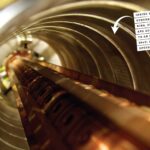Interest has grown at the federal level since 2001. “After 9/11, Bryant says, “the US government was eager to do anything to find out who had committed the attacks and to prevent it from happening again.” Pollen has since been used in several terrorism investigations. Although he couldn’t comment on the cases, Bryant hinted at their nature: “Pollen is a very good telltale for where things come from.” Pollen has also been used to investigate war crimes. In the late 1990s, forensics experts working with the United Nations in Bosnia found pollen evidence indicating that more than 2,000 Bosnian Muslim men and boys executed over five days in 1995 during the Bosnian war had later been moved from five large mass graves to several smaller ones scattered across the countryside to cover up the massacre.
Yet pollen’s purview extends far beyond violent crimes. Around the world, it has been used to break up a cocaine ring, authenticate antiques, find counterfeit Viagra and antimalarial drugs, and even track down stolen sheep and a lawn mower. Pollen’s seemingly limitless versatility is one more reason why it’s a crucial addition to the forensics toolbox.
And it won’t be the last. A few years ago, a fungus expert, or mycologist, named David Hawksworth advanced Wiltshire’s work by sharing his knowledge of fungi, whose spores, like those of plants, can link objects and people to crime scenes. Mould can also be used to determine time of death when other clues, like flies swarming a corpse, aren’t present. Hawksworth and Wiltshire later married, and today the two are championing the use of ecological evidence in forensics. Pollen and fungi evidence have bolstered each other in some cases, Wiltshire says. Fungus, it seems, is the next frontier.














